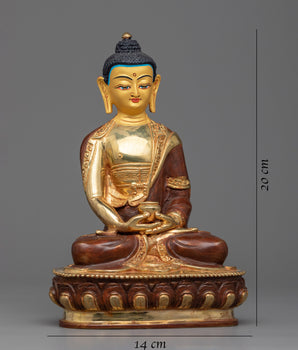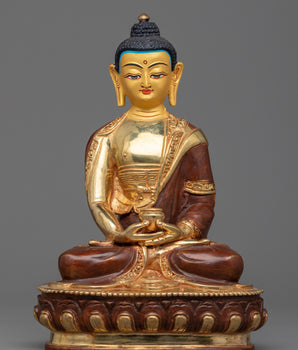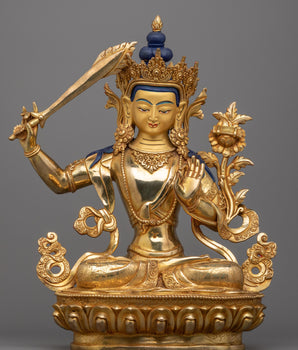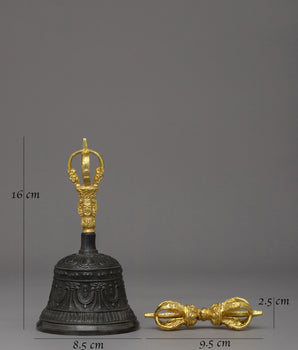










Shakyamuni Buddha - Embodiment of Peace | Gautama Buddha Statue

100% AUTHENTIC

HANDMADE

FREE SHIPPING
Handcrafted Statue of Shakyamuni Buddha - Embodiment of Peace
-------------------------------------------
Size: 8.5”/21.5cm (Height) x 5.9”/15cm (Base)
Weight: 1.40 kg
Material: 24K Gold Gilded, Gold & Acrylic Paintings, Copper Body
-------------------------------------------
About our Statue:
This Handcrafted Statue of Shakyamuni Buddha—Embodiment of Peace, also known as Gautama Buddha, weighs 1.40 kg and stands 8.5”/21.5cm in height and 5.9”/15cm at the base. Made from copper with 24K gold gilding and detailed gold and acrylic paintings, it reflects the serene presence and enlightened wisdom of the historical Buddha. Expertly handcrafted by skilled Nepali artisans, it makes a timeless addition to altars, meditation areas, or personal spiritual spaces.
Shakyamuni Buddha is shown seated in serene meditation, his eyes gently lowered to convey deep inner stillness and enlightened presence. His right hand reaches toward the ground in the earth-touching gesture (bhūmisparśa mudrā), a decisive moment symbolizing his call for the Earth to witness his enlightenment. His left hand cradles an alms bowl, reflecting his life of simplicity, humility, and renunciation. Atop his head is the uṣṇīṣa, representing his boundless wisdom. At the same time, his hair is styled in tight curls—a reference to the legend of snails protecting him during his extended meditation under the Bodhi tree. He sits in vajra posture on a moon disc lotus throne, symbolizing unwavering focus, inner balance, and spiritual purity. Two graceful lotus blooms behind him signify transformation, rising from worldly suffering (saṃsāra) to attain the purity of awakening. This portrayal of Shakyamuni is peaceful and dignified, capturing his essence as a timeless guide of clarity, compassion, and awakening.
Introduction to Shakyamuni Buddha:
Gautama Buddha, also known as Shakyamuni Buddha, was a spiritual teacher and the founder of Buddhism, born as Siddhartha Gautama in ancient Nepal. Renouncing his royal life in search of truth, he attained enlightenment under the Bodhi tree and shared the path to liberation from suffering. At the core of his teachings are the Four Noble Truths: the truth of suffering (duḥkha), its origin (samudaya), its cessation (nirodha), and the path leading to its cessation (mārga). This path is known as the Noble Eightfold Path, which includes right view, right intention, right speech, right action, right livelihood, right effort, right mindfulness, and right concentration—a guide to ethical conduct, mental discipline, and wisdom that leads to the end of suffering and ultimate freedom (nirvāṇa).
How do you take care of your statues?
• Place them at room temperature, avoiding direct sunlight.
• Make sure that the area where your statue is placed is entirely free of moisture and dust.
• Place it at the highest place on your altar after being consecrated by the Lama/monks. The best practice is to keep them covered inside a glass cabinet.
• Do not use your bare hands or any objects with a rough surface to wipe the face.
• Directly touching objects with the bare hand can smudge the face, leaving scratches.





















